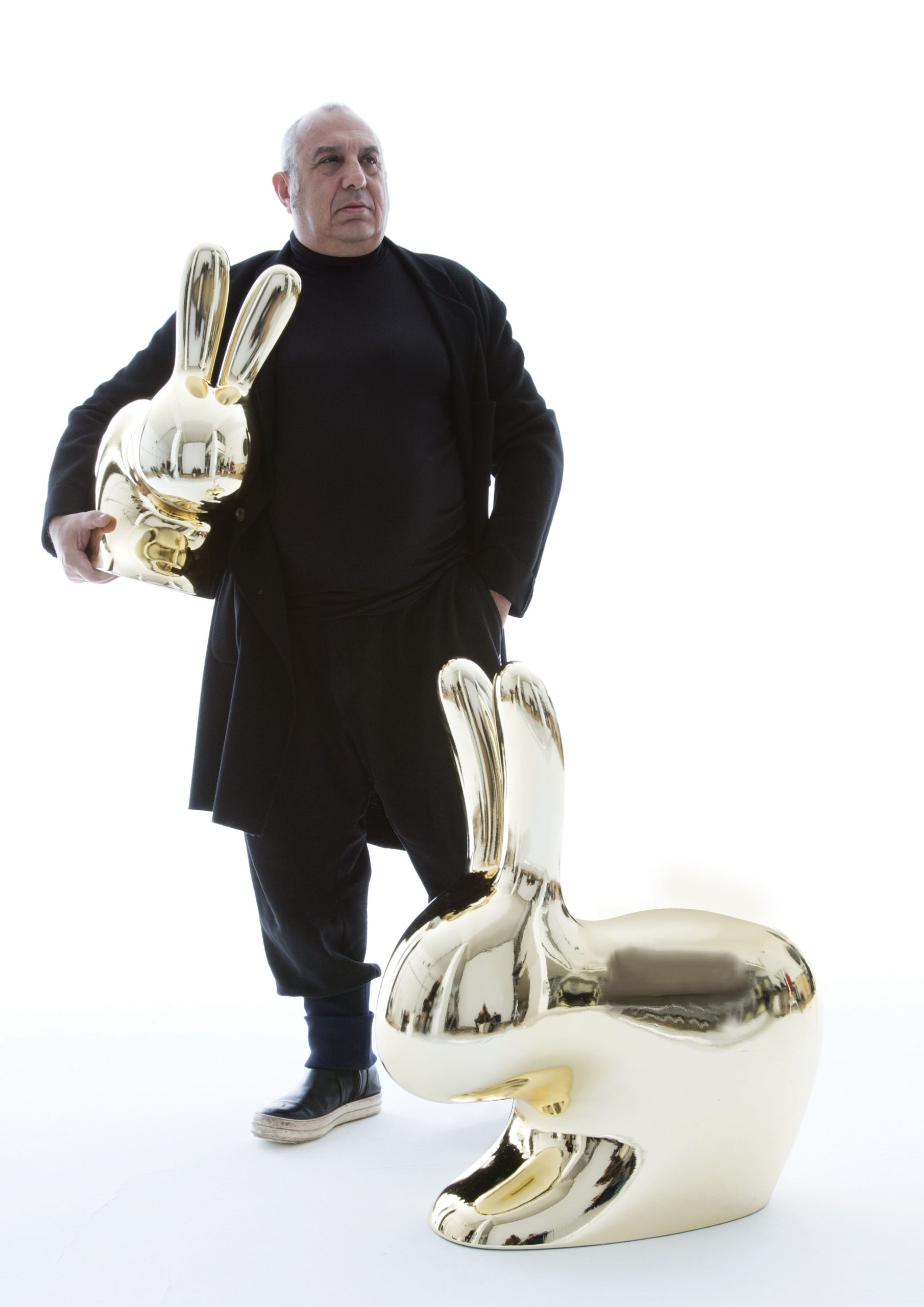Stefano Giovannoni lives and works in Milan as industrial designer, interior designer and architect.He graduated at the University of Architecture in Florence at the age of 23 and, in the same faculty, he taught and conducted research until 1991.
In 1984 and 1985 he collaborated with Ettore Sottsass and Alchimia-Mendini. He taught at Domus Academy in Milan, SPD Milan, at Università del progetto di Reggio Emilia, at University of Architecture in Florence and in Genoa.
– What are the biggest challenges you have met in your career?
In 1988 I was working in Florence with Guido Venturini we had a group called King Kong.
Alessandro Mendini, who was the director of a magazine called Ollo called us because he was interested in publishing our work. That time we were working on strange crazy objects made with polyurethane foam. Mendini at the end of the meeting told us he wanted to introduce us to Alberto Alessi. Few days later, they called us for fixing an appointment with Alberto. We went to see him with a book of objects really far from what could be an Alessi product. He didn’t really understand what we were capable of doing for his company, but he asked us to design some objects including a tray. The next day, Girotondo was born: a simple round stainless steel tray, characterized by a perforated man motif. Our aim was to reconnect design with figurative and popular culture designing a product that everybody could understand, a girl fifteen years old has her mother and her grandmother. Immediately the Girotondo tray became a worldwide success, and the first year it was sold ten times more than marketing people forecasted.
After a few years, it becomes the best-selling product in the history of Italian design. Today, after 30 years, it becomes a wide family of products with more than ten million products sold.
– How would you describe your work?
I have been always interested in a narrative and figurative approach to design, creating products characterized by an emotional feeling able to speak to a wide range of customers, especially to young generations.
Design products often try to intercept our social status selecting and sharing the customer accordingly. My products are ironic because they try to dramatize the relation between the man and the objects, which has always been dramatic: the object you own can tell if you are rich or poor, if you’re ignorant or cultured and updated. A good design product, as well as a good tv show, is something able to speak a strong and immediate language, able to be perceived by a wide range of customers.
– How is your passion for visual art and design born?
Since I was ten, I used to go with my uncle, who was a painter, to design horses. After few years, I started painting, participating to art competitions and winning several of them. I have always been fond of visual arts, reading many books about art history.
When I was eighteen, I start studying architecture at the University of Florence, and I graduated at 23 years old. I started working in architecture, but after few years, I understood that design was a contest more open and suitable for a young creative person like me.
– What is the most difficult work you have done and why?
In the beginning of the years 2000, I started working with Asian companies. At first in Japan, after in Taiwan, then in Korea, and at the end in China. In China, I worked with huge companies that produced electronic scooters and wind turbines. Working with Chinese companies was really complicated! They want the best of the best but they don’t know what they really want; for this reason, in the beginning they wanted to marry me, but after six months, I had to stop those relations since they had no idea how to approach product design.
– What is your main source of inspiration?
My main source of inspiration is nature. If we look at nature, we find infinite sources in terms of shapes, materials, colors. The human body, animals and plants, are important references for our design works. If the traditional design language used to put the focus inside the object managing the relations between the elements, I developed a narrative language where I moved the focus outside the objects by taking a reference from nature or from our material world with an effect of displacement, assuming a typical metaphor of the artistic language.
– What about your next project?
In 2016 I founded my own brand Qeeboo, and right now, I am more and more involved in the company in which I have invested most of my work. Qeeboo is growing fast, giving me a lot of satisfaction today; it is the newest smart company in the scenery of Italian design. Qeeboo products, like my Rabbit chair, Kong, Teddy or the Giraffe in love and Turtle carry by Marcantonio, are the best-selling products known worldwide. The last product I designed for the next Salone del Mobile, which will be held in Milan next April, is a bookcase printed in one piece thanks to rotational molding technology. Recently I designed some products for the Korean market, including a sound bar whit integrated A.I., and a new type of air purifier able to filter the air coming from the outside. I also designed the dome of a new big church under construction in Seoul.
– Outside of design, what are you currently interested in and how is it influencing your design work?
I have a lot of interests and hobbies out of design, one of them is cooking; in our house we have three kitchens: one for me, one for my wife and one for the parties on the terrace. My passion is the sea food. I am a fisherman I have a specific boat for this activity, I love fishing and eating fish. Another hobby is music, I own a thousand of CDs and vinyls of different kind of music, including jazz, rock, indie, and electronics. Regarding the influence in my design work, an important role is playing by my interest for art and philosophy. Above all, the books of the French philosopher Jean Baudrillard, regarding the consumerism culture and the system of the objects, have been very important for my artistic background.

